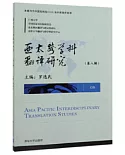以語言學初學者為對象,有中、英文兩個版本,由我國著名語言學家胡壯麟教授領銜主編。
《語言學簡明教程(第2版英文本)》涵蓋了語言學及其主要分支的核心內容,包括語音學、音位學、形態學、詞匯學、句法學、語義學、語用學、社會語言學和認知語言學等。展開方式深入淺出,有助於不同層次、不同專業的學生了解語言學,對於英語專業學生擴展人文知識、反思語言學習方法以及准備英語專業八級考試、研究生入學考試等均有很大幫助。
在保證邏輯嚴密性、學科整體性的基礎上,本教材在趣味性、通俗性方面做了積極的嘗試,通過大量的當代語言實例、生動的圖片圖表、淺顯易懂的闡述方式以及豐富的啟發式練習向入門者介紹語言學知識。一冊《語言學簡明教程》在手,學習語言學不再犯愁!祝你成為語言學習的達人!
目錄
Chapter 1 Language and Linguistics
1.1 Introduction
1.2 History of Linguistics
1.3 Why Study Linguistics?
1.4 Properties of Language
1.5 Body Language and Other ”Languages”
1.6 Functions of Language
1.7 Branches in Linguistics
1.8 FAQ about Studying Linguistics
1.9 Summary
Chapter 2 Phonetics: Speech Sounds
2.1 Introduction
2.2 Spelling, Pronunciation and Phonetic Transcription
2.3 Speech Organs
2.4 The Phonetic Properties of Speech Sounds
2.5 Vowels
2.6 Summary
Chapter 3 Phonology : Sound Patterns
3.1 Introduction
3.2 The Distinctive Sounds of a Language
3.3 Beyond the Sound Segments
3.4 Summary
Chapter 4 Lexicon
4.1 Introduction
4.2 What Is Word?
4.3 Classification of Words
4.4 Morpheme and Its Types
4.5 Wnrd-fnrmatlnn
4.6 Summary
Chapter 5 Grammar: Clause
5.1 Introduction
5.2 Word Classes and Word Order
5.3 Clause Types
5.4 Grammatical Categories
5.5 ”Half-clauses”
5.6 Semantic Roles of Clause Elements
5.7 How Do We Play with Clauses?
5.8 Summary
Chapter 6 Grammar: Text
6.1 Introduction
6.2 Theme and Textual Function
6.3 Information Structure
6.4 Cohesion
6.5 Conversation Analysis
6.6 Summary
Chapter 7 Language and Meaning
7.1 Introduction
7.2 Word Meaning
7.3 How Are Word Meanings Related?
7.4 How Is Word Meaning Analyzed?
7.5 Sentence Meaning
7.6 Context and Implieature
7.7 Summary
Chapter 8 Pragmatics.. Meaning in Use
8.1 Introduction
8.2 Deixis
8.3 Presupposition
8.4 Conversational Implieature
8.5 Linguistic Politeness
8.6 Speech Acts
8.7 Summary
Chapter 9 Cognitive Linguistics:Language and Cognition
9.1 Introduction
9.2 Language as Conceptual Metaphor
9.3 Cognitive Grammar
9.4 Construction Grammar
9.5 Cognitive Semantics
9.6 Conceptual Semantics
9.7 Summary
Chapter 10 Writing System
10.1 Introduction
10.2 The History of Writing
10.3 Types of Writing Systems
10.4 The Innovation and Reformation of Writing System
10.5 Chinese Characters
10.6 The Importance of Writing
10.7 Summary
Chapter 11 Language Change
11.1 Introduction
11.2 Language Change in Various Aspects
11.3 Life and Death of Language
11.4 Causes of Language Change
11.5 Summary
Chapter 12 Varieties and Variation
12.1 Introduction
12.2 Dialects and Standard Varieties
12.3 Variation According to Use-Register and Genre
12.4 Summary
Key to Questions and Exercises
1.1 Introduction
1.2 History of Linguistics
1.3 Why Study Linguistics?
1.4 Properties of Language
1.5 Body Language and Other ”Languages”
1.6 Functions of Language
1.7 Branches in Linguistics
1.8 FAQ about Studying Linguistics
1.9 Summary
Chapter 2 Phonetics: Speech Sounds
2.1 Introduction
2.2 Spelling, Pronunciation and Phonetic Transcription
2.3 Speech Organs
2.4 The Phonetic Properties of Speech Sounds
2.5 Vowels
2.6 Summary
Chapter 3 Phonology : Sound Patterns
3.1 Introduction
3.2 The Distinctive Sounds of a Language
3.3 Beyond the Sound Segments
3.4 Summary
Chapter 4 Lexicon
4.1 Introduction
4.2 What Is Word?
4.3 Classification of Words
4.4 Morpheme and Its Types
4.5 Wnrd-fnrmatlnn
4.6 Summary
Chapter 5 Grammar: Clause
5.1 Introduction
5.2 Word Classes and Word Order
5.3 Clause Types
5.4 Grammatical Categories
5.5 ”Half-clauses”
5.6 Semantic Roles of Clause Elements
5.7 How Do We Play with Clauses?
5.8 Summary
Chapter 6 Grammar: Text
6.1 Introduction
6.2 Theme and Textual Function
6.3 Information Structure
6.4 Cohesion
6.5 Conversation Analysis
6.6 Summary
Chapter 7 Language and Meaning
7.1 Introduction
7.2 Word Meaning
7.3 How Are Word Meanings Related?
7.4 How Is Word Meaning Analyzed?
7.5 Sentence Meaning
7.6 Context and Implieature
7.7 Summary
Chapter 8 Pragmatics.. Meaning in Use
8.1 Introduction
8.2 Deixis
8.3 Presupposition
8.4 Conversational Implieature
8.5 Linguistic Politeness
8.6 Speech Acts
8.7 Summary
Chapter 9 Cognitive Linguistics:Language and Cognition
9.1 Introduction
9.2 Language as Conceptual Metaphor
9.3 Cognitive Grammar
9.4 Construction Grammar
9.5 Cognitive Semantics
9.6 Conceptual Semantics
9.7 Summary
Chapter 10 Writing System
10.1 Introduction
10.2 The History of Writing
10.3 Types of Writing Systems
10.4 The Innovation and Reformation of Writing System
10.5 Chinese Characters
10.6 The Importance of Writing
10.7 Summary
Chapter 11 Language Change
11.1 Introduction
11.2 Language Change in Various Aspects
11.3 Life and Death of Language
11.4 Causes of Language Change
11.5 Summary
Chapter 12 Varieties and Variation
12.1 Introduction
12.2 Dialects and Standard Varieties
12.3 Variation According to Use-Register and Genre
12.4 Summary
Key to Questions and Exercises
網路書店
類別
折扣
價格
-
新書87折$151





















